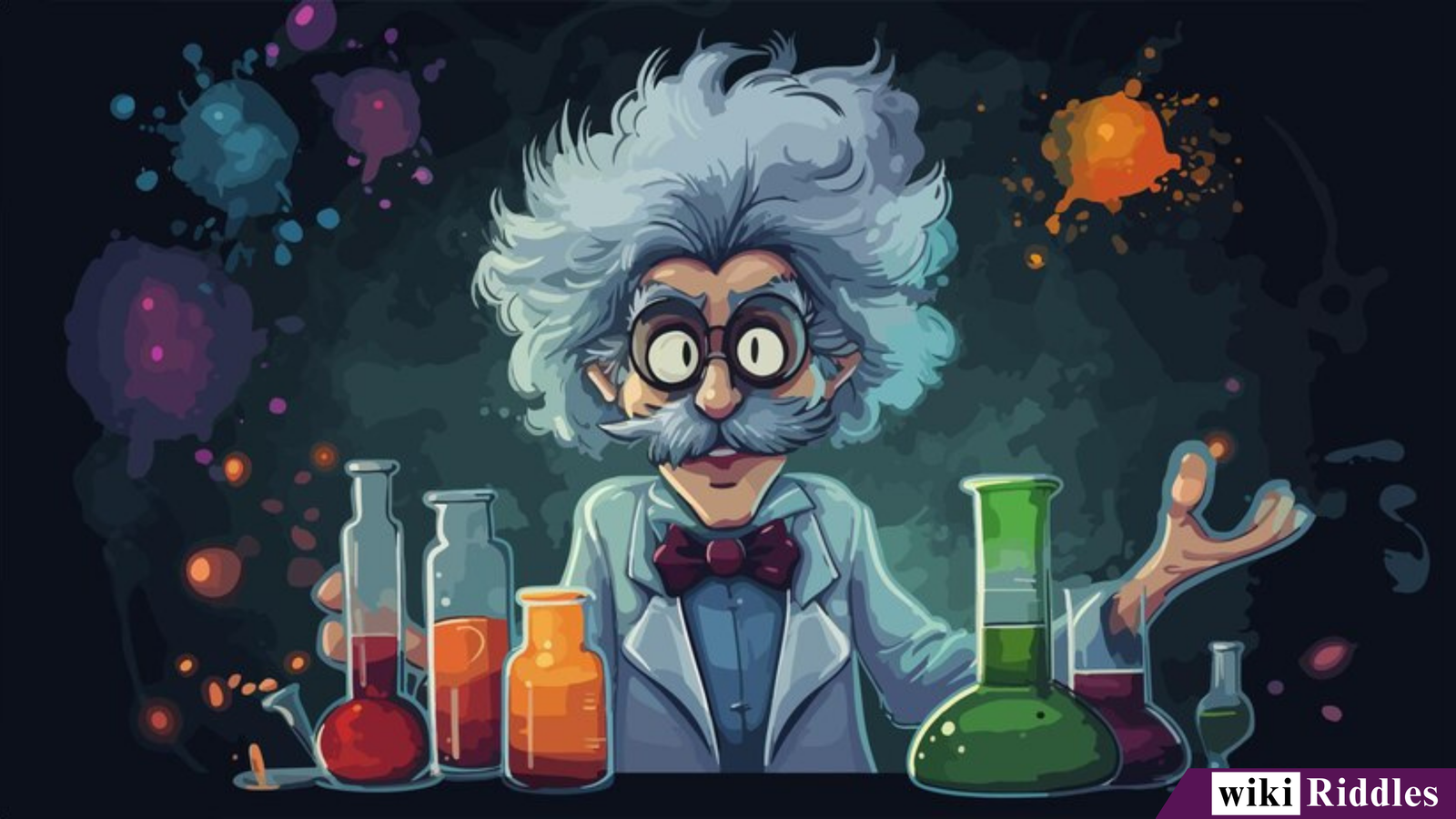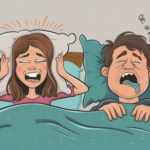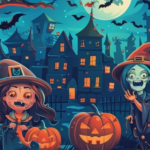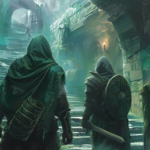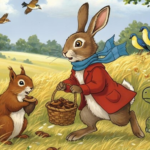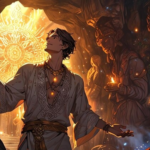Chemical riddles are puzzles or questions that challenge a person’s knowledge of chemistry in a fun and engaging way. They might involve chemical elements, reactions, or even processes, all wrapped up in a brain teaser format. Think of them as fun little challenges designed to get your mind working while learning about the wonders of chemistry. Whether you’re a high school student or an advanced chemist, chemical riddles have something for everyone!
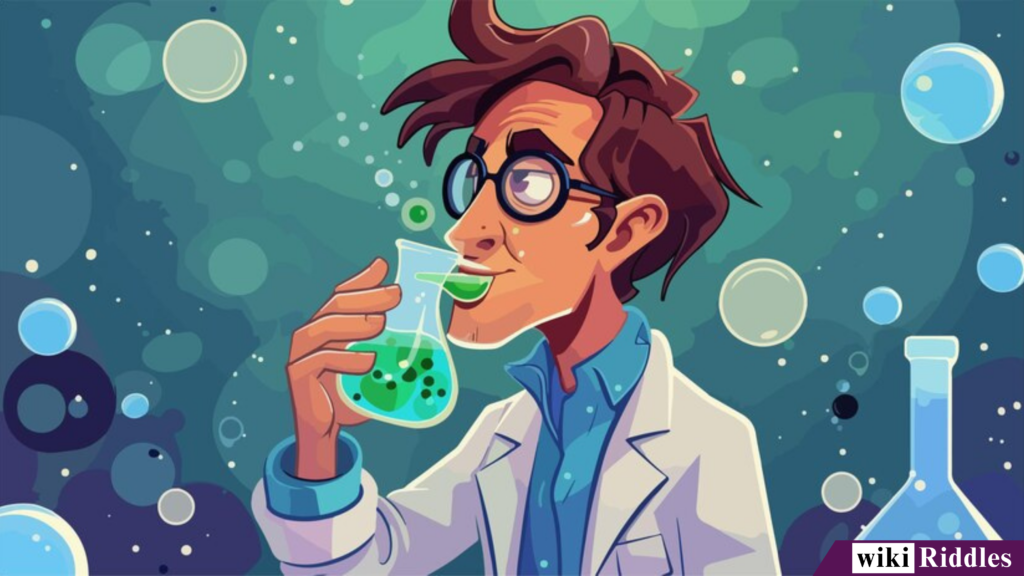
200+ “Chemical Riddles” with Answers
Elemental Mysteries
- Riddle: I am a metal that’s light as a feather but strong enough to lift a car. What am I?
Answer: Aluminum. - Riddle: I’m the element that makes up the sun and stars, and I’m the first on the periodic table. What am I?
Answer: Hydrogen. - Riddle: I am found in salt and I make your body function properly, but in excess, I’m harmful. What am I?
Answer: Sodium. - Riddle: I am the element you breathe in every day, and I make up about 21% of the air. What am I?
Answer: Oxygen. - Riddle: I am a noble gas that doesn’t react with anyone. What am I?
Answer: Helium. - Riddle: I am a metal that is liquid at room temperature. What am I?
Answer: Mercury. - Riddle: I am an element that you find in your bones and teeth, and I am a part of the compound calcium phosphate. What am I?
Answer: Calcium. - Riddle: I am the element that gives rubies their red color. What am I?
Answer: Chromium. - Riddle: I am essential for life and am found in water, plants, and animals, but I am also highly reactive and explosive. What am I?
Answer: Oxygen. - Riddle: I am the element that gives bananas their color and is also used in radioactive treatments. What am I?
Answer: Potassium.
Periodic Table Puzzles
- Riddle: I am an element used in pencils but also part of the air you breathe. What am I?
Answer: Carbon. - Riddle: I am an element that is used in electronics and makes up the backbone of semiconductors. What am I?
Answer: Silicon. - Riddle: I am a radioactive element and was discovered by Marie Curie. What am I?
Answer: Polonium. - Riddle: I am a metal with a strong magnetic field and can be used in the production of steel. What am I?
Answer: Iron. - Riddle: I am a halogen, and my atomic number is 35. I’m commonly found in household cleaners. What am I?
Answer: Bromine. - Riddle: I am a soft, silvery-white alkali metal that reacts violently with water. What am I?
Answer: Potassium. - Riddle: I am essential for life, found in the human body, and am also in a common compound that makes table salt. What am I?
Answer: Chlorine. - Riddle: I am an element with a sweet name, and I am used in creating sugar. What am I?
Answer: Carbon. - Riddle: I am a metal used in the creation of electrical wiring and am often found in nature as copper ores. What am I?
Answer: Copper. - Riddle: I am the only element that has three different stable isotopes. What am I?
Answer: Carbon.
Chemical Reactions
- Riddle: I happen when two chemicals mix and create bubbles or heat. What am I?
Answer: A chemical reaction. - Riddle: I am the reaction that occurs when hydrogen and oxygen combine, forming water. What kind of reaction am I?
Answer: Synthesis reaction. - Riddle: I am the reaction that occurs when a substance burns, and I need oxygen to occur. What am I?
Answer: Combustion. - Riddle: When vinegar and baking soda mix, they release gas. What type of reaction is this?
Answer: Acid-base reaction. - Riddle: I am the process where one substance is reduced and another oxidized. What am I?
Answer: Redox reaction. - Riddle: I occur when an acid reacts with a metal, producing hydrogen gas. What kind of reaction am I?
Answer: Single replacement. - Riddle: I am the kind of reaction that takes place when a solid forms from two liquids. What am I?
Answer: Precipitation reaction. - Riddle: I am a reaction where a substance breaks down into two or more simpler substances. What am I?
Answer: Decomposition reaction. - Riddle: I am a reaction where energy is released in the form of heat. What am I?
Answer: Exothermic reaction. - Riddle: I am a reaction where energy is absorbed. What am I?
Answer: Endothermic reaction.
Molecular Structure Challenges
- Riddle: I am the shape of a water molecule, with two hydrogen atoms and one oxygen atom. What is my structure?
Answer: Bent (V-shaped). - Riddle: I am a molecule made up of only carbon and hydrogen atoms, and I form the backbone of many organic compounds. What am I?
Answer: Hydrocarbon. - Riddle: I’m a molecule made of two oxygen atoms bonded together. What am I?
Answer: Oxygen molecule (O₂). - Riddle: I’m made up of carbon, hydrogen, and oxygen, and I’m the main source of energy for the body. What am I?
Answer: Glucose. - Riddle: I am the bond formed when two atoms share electrons equally. What am I?
Answer: Covalent bond. - Riddle: I am a molecule made up of carbon atoms arranged in a ring. What am I?
Answer: Benzene. - Riddle: I am a molecule with a central atom bonded to four other atoms, forming a tetrahedral shape. What am I?
Answer: Methane (CH₄). - Riddle: I am a molecule that consists of two hydrogen atoms and one oxygen atom. What am I?
Answer: Water (H₂O). - Riddle: I am a chemical compound that contains a carbonyl group attached to a nitrogen atom. What am I?
Answer: Amide. - Riddle: I am a molecule composed of a phosphate group, a sugar, and a nitrogenous base. What am I?
Answer: Nucleotide.
Acid-Base Riddles
- Riddle: I’m a substance that turns litmus paper red and has a pH below 7. What am I?
Answer: Acid. - Riddle: I am a base that is commonly found in household cleaners. What am I?
Answer: Ammonia. - Riddle: I’m formed when an acid reacts with a base. What am I?
Answer: Salt. - Riddle: I’m a common substance with a neutral pH of 7. What am I?
Answer: Water. - Riddle: I turn litmus paper blue and have a pH above 7. What am I?
Answer: Base. - Riddle: I am a strong acid, and I am used in the production of fertilizers and explosives. What am I?
Answer: Nitric acid. - Riddle: I am a base that is found in your stomach, and I help digest food. What am I?
Answer: Sodium bicarbonate (baking soda). - Riddle: I am a compound that can neutralize acids. What am I?
Answer: Base. - Riddle: I am formed when sulfuric acid reacts with metals. What am I?
Answer: Sulfate. - Riddle: I’m commonly found in stomach antacids, and I’m a weak base. What am I?
Answer: Magnesium hydroxide.
Organic Chemistry Enigmas
- Riddle: I’m a type of hydrocarbon that contains only single bonds between carbon atoms. What am I?
Answer: Alkane. - Riddle: I’m a compound that contains both a hydroxyl group (-OH) and a carbonyl group (-CO). What am I?
Answer: Alcohol. - Riddle: I’m a type of organic molecule that consists of only carbon and hydrogen atoms in a ring structure. What am I?
Answer: Aromatic compound. - Riddle: I am the simplest organic molecule, containing only one carbon atom. What am I?
Answer: Methane. - Riddle: I am an organic compound that contains nitrogen and is used in the creation of proteins. What am I?
Answer: Amino acid. - Riddle: I’m a class of organic compounds that are made from an alcohol and a carboxylic acid. What am I?
Answer: Ester. - Riddle: I am a compound made of two hydrocarbon groups linked by an oxygen atom. What am I?
Answer: Ether. - Riddle: I am a molecule that has both hydrophilic and hydrophobic parts. What am I?
Answer: Surfactant. - Riddle: I am an organic compound with a double bond between two carbon atoms. What am I?
Answer: Alkene. - Riddle: I am the building block of proteins and am made up of an amine group and a carboxyl group. What am I?
Answer: Amino acid.
Inorganic Chemistry Conundrums
- Riddle: I am a compound that contains metals and nonmetals, often with high melting points. What am I?
Answer: Ionic compound. - Riddle: I am formed when a metal reacts with an acid. What am I?
Answer: Salt. - Riddle: I’m the compound that forms when sulfur dioxide reacts with oxygen in the air. What am I?
Answer: Sulfur trioxide. - Riddle: I am a solid that has a crystalline structure and conducts electricity when dissolved in water. What am I?
Answer: Salt. - Riddle: I am a compound that contains a metal and oxygen and is often used to treat water. What am I?
Answer: Ferric oxide. - Riddle: I am a gaseous compound that contains nitrogen and oxygen. What am I?
Answer: Nitrous oxide. - Riddle: I am a compound with a high melting point and am used in construction materials. What am I?
Answer: Calcium carbonate. - Riddle: I am a type of compound that doesn’t dissolve in water but can conduct electricity when melted. What am I?
Answer: Ionic compound. - Riddle: I am a compound that contains only nonmetals and usually has low melting points. What am I?
Answer: Molecular compound. - Riddle: I am an inorganic compound that’s essential for life and is part of your bones. What am I?
Answer: Calcium phosphate.
Atomic Number Clues
- Riddle: My atomic number is 1, and I am the lightest element in the universe. What am I?
Answer: Hydrogen. - Riddle: I have an atomic number of 6, and I form the backbone of all organic molecules. What am I?
Answer: Carbon. - Riddle: I’m the element with atomic number 8, and I’m essential for life as we know it. What am I?
Answer: Oxygen. - Riddle: I have an atomic number of 79, and I’m known for my precious metal status. What am I?
Answer: Gold. - Riddle: I’m the element with atomic number 11, and I’m found in table salt. What am I?
Answer: Sodium. - Riddle: My atomic number is 26, and I’m essential for building steel. What am I?
Answer: Iron. - Riddle: I am the element with atomic number 17, and I am a halogen. What am I?
Answer: Chlorine. - Riddle: I am a noble gas with atomic number 2, and I’m commonly used in balloons. What am I?
Answer: Helium. - Riddle: I have an atomic number of 12, and I’m commonly used in making batteries and alloys. What am I?
Answer: Magnesium. - Riddle: My atomic number is 14, and I am commonly used in electronics. What am I?
Answer: Silicon.
Chemical Bonding Puzzles
- Riddle: I am the type of bond where electrons are shared equally between atoms. What am I?
Answer: Nonpolar covalent bond. - Riddle: I’m the bond where one atom donates an electron to another atom. What am I?
Answer: Ionic bond. - Riddle: I am a type of bond that forms between two atoms of the same element. What am I?
Answer: Covalent bond. - Riddle: I am the bond where electrons are shared unequally, creating a dipole. What am I?
Answer: Polar covalent bond. - Riddle: I am a bond that holds metal atoms together, allowing them to conduct electricity. What am I?
Answer: Metallic bond. - Riddle: I am a bond that forms when an atom donates an electron and another atom accepts it, creating ions. What am I?
Answer: Ionic bond. - Riddle: I’m a type of bond that involves the sharing of two electrons between two atoms. What am I?
Answer: Single covalent bond. - Riddle: I’m a stronger bond where three pairs of electrons are shared between atoms. What am I?
Answer: Triple covalent bond. - Riddle: I am formed between atoms of the same metal and allow them to form alloys. What am I?
Answer: Metallic bond. - Riddle: I am the bond that holds together atoms in a molecule of hydrogen gas (H₂). What am I?
Answer: Covalent bond.
States of Matter Mysteries
- Riddle: I’m the state of matter that has a fixed shape and volume, and my particles vibrate but don’t move freely. What am I?
Answer: Solid. - Riddle: I’m the state of matter where particles move freely, and I take the shape of any container. What am I?
Answer: Gas. - Riddle: I have a fixed volume but no fixed shape, and I flow to fill the shape of my container. What am I?
Answer: Liquid. - Riddle: I exist at extremely high temperatures and consist of positively charged ions and free electrons. What am I?
Answer: Plasma. - Riddle: I am the state of matter where molecules are packed tightly but can still slide past one another. What am I?
Answer: Liquid. - Riddle: I am the state of matter that’s very dense and rigid, with particles that are tightly packed. What am I?
Answer: Solid. - Riddle: I exist at temperatures above 5000°C and am commonly found in stars. What am I?
Answer: Plasma. - Riddle: In my state, I can compress and expand to fill the space around me. What am I?
Answer: Gas. - Riddle: I am a state of matter that’s typically found in everyday substances like water and oil. What am I?
Answer: Liquid. - Riddle: I have no fixed shape but have a defined volume and can flow like a river. What am I?
Answer: Liquid.
Chemical Equations Riddles
- Riddle: I am the balanced equation for the reaction between sodium and water. What is my equation?
Answer: 2Na + 2H₂O → 2NaOH + H₂. - Riddle: I am the equation for the combustion of methane. What is my equation?
Answer: CH₄ + 2O₂ → CO₂ + 2H₂O. - Riddle: I’m the equation for the formation of water from hydrogen and oxygen. What is my equation?
Answer: 2H₂ + O₂ → 2H₂O. - Riddle: I represent the decomposition of calcium carbonate. What is my equation?
Answer: CaCO₃ → CaO + CO₂. - Riddle: I am the equation for the reaction between hydrochloric acid and sodium hydroxide. What is my equation?
Answer: HCl + NaOH → NaCl + H₂O. - Riddle: I am the equation for the reaction of zinc with sulfuric acid. What is my equation?
Answer: Zn + H₂SO₄ → ZnSO₄ + H₂. - Riddle: I am the equation for the reaction of oxygen with carbon monoxide. What is my equation?
Answer: 2CO + O₂ → 2CO₂. - Riddle: I am the equation for the formation of ammonia from nitrogen and hydrogen. What is my equation?
Answer: N₂ + 3H₂ → 2NH₃. - Riddle: I am the equation for the neutralization of sulfuric acid with potassium hydroxide. What is my equation?
Answer: H₂SO₄ + 2KOH → K₂SO₄ + 2H₂O. - Riddle: I am the equation for the decomposition of hydrogen peroxide. What is my equation?
Answer: 2H₂O₂ → 2H₂O + O₂.
Noble Gases Quizzes
- Riddle: I am the noble gas with atomic number 10, and I am often used in lighting. What am I?
Answer: Neon. - Riddle: I am the noble gas with atomic number 2, and I am commonly used in party balloons. What am I?
Answer: Helium. - Riddle: I am the noble gas with atomic number 18, and I am often used in signs and lighting. What am I?
Answer: Argon. - Riddle: I am the noble gas with atomic number 54, and I’m used in high-performance light bulbs. What am I?
Answer: Xenon. - Riddle: I am the heaviest noble gas, and my atomic number is 86. What am I?
Answer: Radon. - Riddle: I am the noble gas with atomic number 36, and I am often used in industrial applications. What am I?
Answer: Krypton. - Riddle: I am a noble gas that can be found in the Earth’s atmosphere in small amounts and is used in welding. What am I?
Answer: Argon. - Riddle: I am a noble gas used in the creation of neon lights. What am I?
Answer: Neon. - Riddle: I am a noble gas that’s heavier than air and can be found in some fire extinguishers. What am I?
Answer: Argon. - Riddle: I am a colorless, odorless noble gas with atomic number 18, and I’m used in fluorescent lights. What am I?
Answer: Argon.
Periodic Trends Riddles
- Riddle: I am the trend where elements on the left side of the periodic table have lower electronegativity. What am I?
Answer: Electronegativity trend. - Riddle: I’m the trend where atomic size increases as you move down a group. What am I?
Answer: Atomic radius trend. - Riddle: I am the trend where ionization energy decreases as you move down a group. What am I?
Answer: Ionization energy trend. - Riddle: I am the trend where elements in the same period have increasing ionization energy as you move from left to right. What am I?
Answer: Ionization energy trend. - Riddle: I am the trend where the electronegativity of elements increases as you move from left to right across a period. What am I?
Answer: Electronegativity trend. - Riddle: I am the trend where elements become more metallic as you move left across a period. What am I?
Answer: Metallic character trend. - Riddle: I am the trend where atomic size decreases as you move across a period. What am I?
Answer: Atomic radius trend. - Riddle: I am the trend where elements become less reactive as you move across a period. What am I?
Answer: Reactivity trend. - Riddle: I am the trend that explains why nonmetals are more electronegative than metals. What am I?
Answer: Electronegativity trend. - Riddle: I am the trend where ionization energy increases across a period. What am I?
Answer: Ionization energy trend.
Isotope Identification Puzzles
- Riddle: I am an isotope of hydrogen with one proton and one neutron. What am I?
Answer: Deuterium. - Riddle: I am an isotope of carbon with six protons and eight neutrons. What am I?
Answer: Carbon-14. - Riddle: I am an isotope of oxygen with eight protons and ten neutrons. What am I?
Answer: Oxygen-18. - Riddle: I am the most common isotope of uranium, with 92 protons and 143 neutrons. What am I?
Answer: Uranium-238. - Riddle: I am a stable isotope of potassium, with 19 protons and 20 neutrons. What am I?
Answer: Potassium-39. - Riddle: I am an isotope of chlorine with 17 protons and 18 neutrons. What am I?
Answer: Chlorine-35. - Riddle: I am a radioactive isotope of iodine, used in medical treatments, with 53 protons and 74 neutrons. What am I?
Answer: Iodine-131. - Riddle: I am an isotope of helium, the second lightest element, with two protons and two neutrons. What am I?
Answer: Helium-4. - Riddle: I am an isotope of nitrogen, with seven protons and ten neutrons. What am I?
Answer: Nitrogen-15. - Riddle: I am an isotope of sulfur, with 16 protons and 18 neutrons. What am I?
Answer: Sulfur-34.
Electronegativity Clues
- Riddle: I am the most electronegative element on the periodic table. What am I?
Answer: Fluorine. - Riddle: I am a highly electronegative element, but not as much as fluorine. What am I?
Answer: Oxygen. - Riddle: I am an alkali metal with low electronegativity, and I easily lose my electron. What am I?
Answer: Sodium. - Riddle: I am a halogen with an electronegativity slightly lower than fluorine. What am I?
Answer: Chlorine. - Riddle: I am a noble gas with no electronegativity because I do not readily form bonds. What am I?
Answer: Neon. - Riddle: I am the second most electronegative element and am commonly found in water. What am I?
Answer: Oxygen. - Riddle: I am a transition metal with relatively low electronegativity compared to nonmetals. What am I?
Answer: Iron. - Riddle: I am an element with a moderate electronegativity and am commonly used in semiconductors. What am I?
Answer: Silicon. - Riddle: I am a highly electronegative element, and I’m found in the same group as chlorine. What am I?
Answer: Bromine. - Riddle: I am an element in Group 1 with very low electronegativity. What am I?
Answer: Potassium.
Laboratory Mystery Riddles
- Riddle: I am the common laboratory acid used to clean glassware and neutralize bases. What am I?
Answer: Hydrochloric acid. - Riddle: I am a powerful oxidizing agent used in laboratory titrations. What am I?
Answer: Potassium permanganate. - Riddle: I’m used in a laboratory to determine the pH of substances. What am I?
Answer: pH indicator. - Riddle: I am a toxic gas that is often used in laboratory experiments to demonstrate the effects of oxidation. What am I?
Answer: Chlorine gas. - Riddle: I am a piece of laboratory equipment used to heat substances. What am I?
Answer: Bunsen burner. - Riddle: I am used in the lab to measure the volume of a liquid accurately. What am I?
Answer: Burette. - Riddle: I am a glass container commonly used to mix liquids and perform chemical reactions. What am I?
Answer: Beaker. - Riddle: I am a laboratory technique used to separate mixtures based on the differences in boiling points. What am I?
Answer: Distillation. - Riddle: I am a substance often used in laboratories to absorb moisture from the air. What am I?
Answer: Silica gel. - Riddle: I am used in a laboratory to heat liquids and measure temperature precisely. What am I?
Answer: Thermometer.
Mole Concept Riddles
- Riddle: I represent the number of atoms in one mole of a substance. What am I?
Answer: Avogadro’s number. - Riddle: I am the amount of substance that contains exactly 6.022 × 10²³ entities. What am I?
Answer: One mole. - Riddle: I am the molar mass of a substance, expressed in grams per mole. What am I?
Answer: Molar mass. - Riddle: I am the number of grams that contains one mole of a substance. What am I?
Answer: Molar mass. - Riddle: I am a unit of measurement used to count entities in a substance, like atoms or molecules. What am I?
Answer: Mole. - Riddle: I represent the ratio of moles of solute to liters of solution. What am I?
Answer: Molarity. - Riddle: I am the concept used to calculate the amount of substance present in a given sample, measured in moles. What am I?
Answer: The mole concept. - Riddle: I am a ratio used to convert between grams and moles of a substance. What am I?
Answer: Molar mass. - Riddle: I am a unit that allows chemists to count individual particles in a substance, equivalent to 6.022 × 10²³ particles. What am I?
Answer: Mole. - Riddle: I am the conversion factor used in stoichiometry to go from moles of one substance to moles of another. What am I?
Answer: Mole ratio.
Stoichiometry Challenges
- Riddle: If I start with 2 moles of hydrogen gas, how many moles of water will be produced when reacting with 1 mole of oxygen?
Answer: 2 moles of water. - Riddle: How many grams of oxygen are needed to react with 10 grams of methane (CH₄) in complete combustion?
Answer: 40 grams of oxygen. - Riddle: If I have 4 moles of NaCl, how many moles of Na are present in the sample?
Answer: 4 moles of Na. - Riddle: How many grams of H₂O will be formed when 2 moles of hydrogen react with 1 mole of oxygen?
Answer: 36 grams of water. - Riddle: In a reaction, how many moles of CO₂ are produced when 5 moles of glucose (C₆H₁₂O₆) react with oxygen?
Answer: 6 moles of CO₂. - Riddle: If 3 moles of NaOH react with H₂SO₄, how many moles of Na₂SO₄ will be produced?
Answer: 1.5 moles of Na₂SO₄. - Riddle: How many grams of sodium chloride (NaCl) will be formed when 2 moles of sodium react with chlorine gas?
Answer: 117 grams of NaCl. - Riddle: If I react 3 moles of sulfur with excess oxygen, how many grams of sulfur dioxide will be produced?
Answer: 192 grams of SO₂. - Riddle: How many moles of O₂ are needed to completely react with 4 moles of methane (CH₄)?
Answer: 8 moles of O₂. - Riddle: How many grams of nitrogen are required to form 68 grams of ammonia (NH₃)?
Answer: 28 grams of nitrogen.
Redox Reactions Riddles
- Riddle: In the reaction between hydrogen and oxygen to form water, which substance is oxidized?
Answer: Hydrogen. - Riddle: In the reaction between zinc and copper sulfate, which substance is reduced?
Answer: Copper (Cu²⁺). - Riddle: In the reaction 2Na + Cl₂ → 2NaCl, which element undergoes reduction?
Answer: Chlorine. - Riddle: In a redox reaction, which element gains electrons?
Answer: The substance being reduced. - Riddle: In the reaction 2Fe + 3CuSO₄ → Fe₂(SO₄)₃ + 3Cu, which element is oxidized?
Answer: Iron. - Riddle: In the reaction 2K + Cl₂ → 2KCl, what is the oxidizing agent?
Answer: Chlorine. - Riddle: In the reaction between potassium and water, which element is reduced?
Answer: Potassium. - Riddle: In the redox reaction between hydrogen and oxygen, which compound is reduced?
Answer: Oxygen. - Riddle: In the reaction 2Cu + O₂ → 2CuO, which element is oxidized?
Answer: Copper. - Riddle: In the reaction of sodium and chlorine, which element undergoes reduction?
Answer: Chlorine.
Catalysis Conundrums
- Riddle: I am a substance that speeds up a chemical reaction without being consumed in the process. What am I?
Answer: Catalyst. - Riddle: I am a catalyst used to speed up the decomposition of hydrogen peroxide. What am I?
Answer: Manganese dioxide. - Riddle: I am an enzyme that catalyzes the breakdown of hydrogen peroxide in living organisms. What am I?
Answer: Catalase. - Riddle: I am a substance that lowers the activation energy of a reaction, allowing it to occur faster. What am I?
Answer: Catalyst. - Riddle: I am a catalyst used in the production of ammonia in the Haber process. What am I?
Answer: Iron. - Riddle: I am a catalytic converter used in vehicles to reduce harmful emissions. What am I?
Answer: Platinum. - Riddle: I am a substance that facilitates the oxidation of alcohols in organic reactions. What am I?
Answer: Palladium. - Riddle: I am a catalyst used in the hydrogenation of vegetable oils. What am I?
Answer: Nickel. - Riddle: I am a substance that can increase the rate of reaction without being used up, but I can be poisoned by other chemicals. What am I?
Answer: Catalyst. - Riddle: I am a process where a catalyst is used to increase the rate of a reaction without being consumed in the process. What am I?
Answer: Catalysis.
Why Are They Important for Learning Chemistry?
Chemical riddles aren’t just a fun distraction. They’re tools that engage the brain and promote active learning. They encourage students to apply their knowledge, problem-solving abilities, and critical thinking skills. When you solve a chemical riddle, you’re not only learning a new fact but also reinforcing your understanding of chemistry concepts in a memorable way.
The Role of Chemical Riddles in Education
- How Chemical Riddles Engage the Mind
One of the best parts about chemical riddles is how they keep you thinking. They challenge you to make connections between various pieces of information and apply your knowledge in new ways. This engagement is crucial in making chemistry more exciting, especially for students who might otherwise find the subject intimidating.
- Boosting Problem-Solving Skills Through Riddles
Solving riddles forces you to think critically. When you’re presented with a puzzle, your mind works hard to find the solution, much like it does in a chemistry experiment. By practicing riddles, students and chemistry enthusiasts can improve their problem-solving skills, which are essential both in the classroom and the lab.
Types of Chemical Riddles
- Riddles Based on Chemical Symbols
These riddles often play with the symbols of elements from the periodic table. For example, “I am a noble gas and my symbol is Xe. Who am I?” This riddle tests your knowledge of the periodic table and your ability to recognize elements by their symbols.
- Riddles About Chemical Reactions
Some chemical riddles involve questions about chemical reactions, such as, “What gas is produced when vinegar reacts with baking soda?” These types of riddles help reinforce concepts like acids, bases, and chemical reactions.
- Periodic Table-based Riddles
Periodic table-based riddles are among the most common. They can involve guessing elements based on clues like “I am a metal, I am the most abundant element in the Earth’s crust, and my symbol is Si.” These riddles help students remember the elements and their properties.
Fun and Easy Chemical Riddles
Riddles for Beginners: Understanding the Basics
Chemical riddles don’t have to be complex to be fun! For beginners, riddles that involve the basic elements and simple concepts are perfect. Here’s an example:
- “I am a metal, I am essential for making jewelry, and I have the symbol Au. Who am I?”
The answer is Gold, of course! These easy riddles help young learners become familiar with the elements and their uses in everyday life.
Simple Chemical Element Riddles
Here’s another beginner-friendly riddle:
- “I am a gas, and I make up 78% of Earth’s atmosphere. Who am I?”
Answer: Nitrogen. This riddle introduces students to the most common elements in the Earth’s atmosphere.
Challenging Chemical Riddles for Advanced Learners
Complex Reactions and Stoichiometry Riddles
As learners advance in their chemistry studies, the riddles can get much more challenging. Imagine a riddle like this:
- “What is the mass of zinc chloride formed when 5 grams of zinc reacts with an excess of hydrochloric acid?”
This requires knowledge of stoichiometry, balancing reactions, and the concept of moles. These advanced riddles are perfect for reinforcing detailed concepts in chemistry.
Advanced Riddles Involving Bonding and Structure
For those who have mastered the basics, riddles involving molecular structure, bonding types (ionic, covalent), and hybridization are fantastic. Here’s an example:
- “I am a compound with the formula C2H6, and I have single bonds between all my atoms. What am I?”
Answer: Ethane. This riddle tests knowledge of organic chemistry and bonding.
How Chemical Riddles Help in Problem-Solving
- Riddles Improve Logical Thinking
Chemical riddles train the brain to think logically and systematically. They require you to follow a trail of clues and use deduction to arrive at the correct answer. This mirrors the process of scientific reasoning in real-life chemistry problems.
- Enhancing Memory Retention Through Fun Puzzles
By making learning fun, chemical riddles can help reinforce key concepts in chemistry. When students associate an answer to a riddle with a specific chemical fact, it can enhance their memory retention and understanding of the subject.
Solving Chemical Riddles: Tips and Techniques
- Break Down the Clues
One useful strategy when solving chemical riddles is to break the clues down into smaller pieces. By focusing on one clue at a time, it’s easier to piece the puzzle together.
- Use the Periodic Table as a Reference
For many chemical riddles, the periodic table is your best friend. Whether you’re figuring out the atomic number, symbol, or properties of an element, the table can give you all the information you need.
- Think Creatively and Outside the Box
Sometimes, riddles require more than just textbook knowledge; they need creativity. Don’t be afraid to think outside the box and approach the riddle from different angles.
Chemical Riddles and Their Role in Scientific Curiosity
- How Riddles Spark Interest in Chemistry
The beauty of chemical riddles lies in their ability to spark curiosity. A clever riddle might make someone interested in the story behind the chemical reaction or inspire them to dive deeper into a topic.
- Riddles as a Gateway to Deeper Scientific Exploration
By making chemistry fun, riddles provide an engaging entry point into more complex areas of science. Students may find themselves asking, “What else can I learn about this element?” This curiosity can lead to further exploration and a lifelong love for chemistry.
Popular Chemical Riddles and Their Solutions
Riddle 1: The Element That’s Always in the Air
- Clue: “I’m a colorless, odorless gas that makes up 21% of Earth’s atmosphere. I’m vital for breathing, and my symbol is O.”
- Answer: Oxygen.
Riddle 2: The Element with a Charge but No Mass
- Clue: “I’m a tiny particle with no mass but a charge. You’ll find me buzzing around atoms. Who am I?”
- Answer: Electron.
The Connection Between Riddles and Creativity in Science
- Encouraging Creative Thinking in Chemistry
Chemistry often requires creative solutions to complex problems. Chemical riddles nurture this creativity by challenging learners to think in unconventional ways. They help students see the science behind everyday life and the world around them.
- The Role of Imagination in Solving Chemical Riddles
Solving a riddle can sometimes feel like solving a mystery. You have to use your imagination to visualize the process and “see” the answer before it’s revealed. This strengthens your problem-solving abilities in both chemistry and other areas of life.
Chemical Riddles in Real-World Chemistry
- Application of Riddles in Labs and Research
Chemical riddles aren’t just limited to classrooms; they also play a role in the world of professional chemistry. Researchers and scientists often need to apply creative thinking and problem-solving skills in their work, much like the process of solving a riddle.
- Riddles in Popular Science and Media
Chemical riddles also appear in popular science books, movies, and games. They’re a fun way to introduce scientific principles to a broad audience and engage them with chemistry in a lighthearted way.
How to Create Your Own Chemical Riddles
- Using Chemical Facts and Knowledge to Form Riddles
Creating a chemical riddle starts with knowing your facts. Use chemical properties, symbols, and reactions to form interesting clues that will lead others to the right answer.
- How to Keep Riddles Engaging and Fun
To keep a riddle fun and engaging, ensure that it’s challenging but solvable. You can incorporate humor or real-world applications to make the riddle more relatable and enjoyable.
The Future of Chemical Riddles in Education
- Digital Tools and Apps for Creating Chemical Riddles
With the rise of digital tools, creating and solving chemical riddles has never been easier. There are apps and online platforms that let teachers and students share and solve chemistry riddles, further enhancing learning.
- How Riddles Will Shape the Future of Chemistry Education
As education continues to evolve, interactive and engaging methods like chemical riddles will play an essential role in shaping the future of chemistry education. These tools help students learn in a fun, engaging, and memorable way.
Conclusion
In conclusion, these 200+ chemical riddles offer a fun and educational way to challenge your chemistry knowledge and sharpen your problem-solving abilities. Whether you’re a student, science lover, or just someone who enjoys a good mental challenge, tackling these riddles will expand your understanding of chemistry in an engaging way. Don’t stop here – if you’re looking for more brain-teasing fun, check out our 200+ “Sun Riddles” with Answers – Solve The Impossible for even more exciting puzzles to solve.
FAQs
Q. What is a chemical riddle?
A chemical riddle is a puzzle that involves chemistry-related clues, such as elements, reactions, or compounds, designed to challenge your understanding of the subject.
Q. How can chemical riddles help with learning chemistry?
They engage the brain, reinforce chemical concepts, and improve problem-solving and memory retention by turning learning into a fun, interactive experience.
Q. Can chemical riddles be used in classrooms?
Yes, chemical riddles are an excellent teaching tool in classrooms, helping students learn in an enjoyable, engaging way while reinforcing chemistry concepts.
Q. Are chemical riddles only for advanced learners?
No! Chemical riddles are for learners of all levels, from beginners to experts. There are riddles for everyone.
Q. Where can I find more chemical riddles?
You can find more chemical riddles in chemistry textbooks, online educational resources, and apps designed to help students learn chemistry in a fun way.
